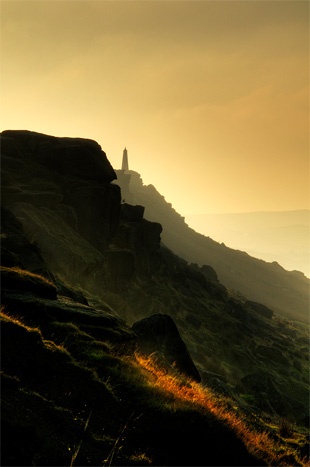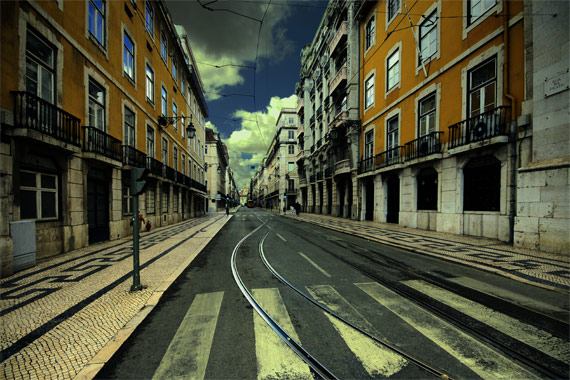If you’re new to photography, you’ve probably heard the term depth of field and wondered what it means and how it can help you take better pictures. Whether you are into portrait, landscape, sports, wedding, or other forms of photography, depth of field is an important concept you have to understand. It’s not complicated to understand and can become one of your best tools in photography.
Depth of field (DOF) refers to the range of distance within a scene that is considerably sharp. There are scientific ways to explain DOF, but I will not try to bore you. I will use simple layman’s terms to explain what it is and how you can use it to your advantage to produce stunning pictures.
Deep Depth of Field
Have you ever seen landscape pictures that are sharp across the entire scene? This is deep depth of field. Deep DOF means the range of distance within a scene that is sharp covers a wider depth in the scene.
Deep DOF is important when taking pictures of landscapes, as you want all details from the foreground through to the background in the scene to be reasonably sharp. It is also important when taking group shots, as you do not want anybody in the picture to be out of focus.
To achieve deep depth of field, use a small aperture (lens opening), such as f/22.
Shallow Depth of Field
When you’re shooting portraits, you want your subject to be really sharp and stand out in the picture. You can achieve this effect by using a shallow depth of field. Shallow DOF means the range of distance within a scene that is sharp is small, covering a smaller depth in the scene. This results in a picture that is only sharp at the focused subject while the foreground and background are blurred.
Shallow DOF is important when taking portraits as you only want the subject to be sharp and stand out in the picture, free from other distractions in the picture. It is also important for taking macros or close up pictures of small objects, as you want them to be really sharp since they are small. Shallow DOF allows your pictures to have some depth to it, giving it a three dimension effect.
To achieve shallow depth of field, use a large aperture (lens opening), such as f/1.8.
Factors that Influence Depth of Field
Aperture. This is the most obvious factor that will determine how DOF affects the outcome of your pictures. A small aperture value (e.g. f/1.8), will create a shallow DOF in your picture, while a large aperture value (e.g. f/22), will create a deep DOF in your picture.
Distance to Subject. The closer you are to your subject, the shallower the DOF, while the farther you are away from your subject, the deeper the DOF.
Focal Length. The longer the focal length you use, the shallower the DOF, given equal subject distance. Zooming will narrow the distance between you and your subject through the lens. As you already know from the distance factor, the closer you are to your subject, the shallower the DOF, regardless of whether you zoomed in or move in closer to the subject. The exact opposite applies when trying to achieve deeper DOF.
To sum it all up, use a low aperture value when taking portraits and macro. Ensure that the distance between you and your subject is close enough to compose your shot. You can close the distance by zooming your lens in or by walking closer to the subject. This creates a shallow depth of field in your picture.
As for landscapes and group shots, use a large aperture value. Ensure that you are not too close to your subjects. You can increase your distance by zooming your lens out or by walking a few steps back from your subjects. This creates a deep depth of field in your picture.
Depth of field is important and should be understood properly as it can help you to compose stunning pictures that has depth to it.
About the Author
Roy Lee is a freelance photographer, who specializes in wedding, portrait, and landscape photography.
Like This Article?
Don't Miss The Next One!
Join over 100,000 photographers of all experience levels who receive our free photography tips and articles to stay current:










It’s true to use a shallow depth of field when your main subject is a person. I like to take it a step further and make the only the eyes the focus point and the rest of the person out of focus. I have had some great response with this.
@Essex Photographer,
Right, the “aperture value” is actually a fraction or ratio between the lens’ focal length and the iris opening. That’s why f/22 is “smaller” than f/2 – it’s like 1/22 vs 1/2. Though all that gets a little too deep into the math and science of it all. The diagram at Wikipedia makes the opening-to-number relation clear:
http://en.wikipedia.org/wiki/F-number
As a camera user, you don’t need to know any of that. There’s no need for math or charts or anything else, or even knowing what actually happens when you change the aperture value. All you need to know is how to adjust the f/number, either on the lens for older manual cameras, or via a wheel or button on digital cameras.
Here’s how i would put it as simply as possible:
DOF is the zone in which objects are in focus.
– For bigger DOF, use a bigger f/number.
– For smaller DOF, use a smaller f/number.
It might have been worth explaining that a F Stop (the aperture) is actually focal length and that is why you have a small aperture vale is a high aperture. I think it may have made it a lot easier to understand than saying high aperture value and low aperture. Other than that good article and quite in depth.
I am one of those persons who is knew to photography. For me, this is the best and the most understandble explanation of depth of field that I have read, and trust me, I had read many articles about it and still didn’t comprehend it. The photos really assist in clarifying the author’s point. Thanks!
It seems to me you’re complicating things. Your points 1 + 3 are exactly the same thing. Unless i’m missing something, the aperture (aka iris) is the physical opening in the lens. The aperture and the “lens opening” (as you put it) are one in the same.
I’d think it’d better serve your readers to explain what an aperture is (perhaps show a photo of one), rather than to add extra points that confuse the matter — especially when the motivation is to educate in a simple manner.
I clicked here via:
http://twitter.com/xequals/statuses/28953802456